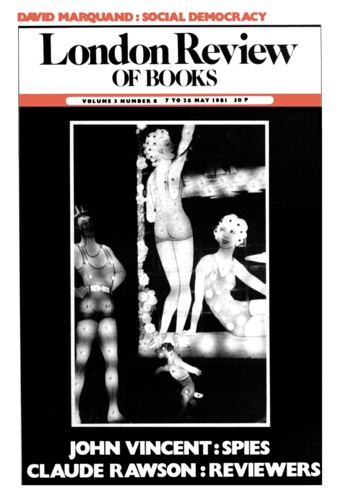Pepys’s Place
Pat Rogers, 16 June 1983
The completion of the new Pepys edition is certainly a publishing event, and thanks to the 350th anniversary of the diarist’s birth it has turned into a media event as well. But is it a literary event, exactly? When the first volume appeared in 1970, the editors laid some stress on their author’s ‘essentially artistic gift’, and suggested that the work was written as though ‘by an alter ego, by another man in the same skin, one who watched understandingly but rather detachedly the behaviour and motives of his fellow-lodger’. These words were penned by Robert Latham’s collaborator, William Matthews, who died in 1976. He was a scholar in the old style, not given to trendy assimilation of historic sources into the narratology of modern angst. But his effort to see the diary as something more than ‘full, objective reporting’, a bigger literary deal than just ‘a concomitant of Pepys’s delight in book-keeping’, points in the right direction. The work somehow retains its currency as ‘one of the great classics of literature’ (to stick with Matthews), without often being read or assessed as literature. Books such as Boswell’s Johnson and Macaulay’s History once gave rise to the same apparent category error, but they have long since received the full hermeneutic treatment. So far Pepys has survived intact, greater in the public imagination than his own words. The fulfilment of this outstanding scholarly enterprise makes one speculate how long he can preserve this state of innocence.




